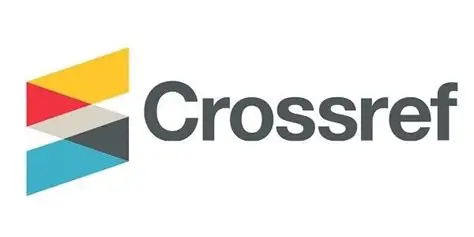EMPOWERING LGBTQIA2S+ COMMUNITY THROUGH EDUCATION
Keywords:
LGBTQIA2S+ community, NEP 2020, Empowerment, Inclusion,,Abstract
Education is crucial for growth, empowerment and meaningful life. In India, there’s a fundamental
right to education for everyone, regardless of people’s religious beliefs, social background, ethnic
identity, gender, or economic standing. The LGBTQIA2S+ community, too, can benefit from
education, gaining support and empowerment. However, despite the presence of an educated
modern society, there remains a lack of acceptance towards different genders. Individuals often
shy away from discussing and accepting sexual minorities as part of the natural human population,
keeping them isolated and detached from mainstream societies, communities, and groups. This
community encompasses everyone who identifies as gay, bisexual, lesbian transgender, queer or
questioning, asexual, intersex and two-spirit. This paper focuses on the relevance of education in
establishment, growth and empower LGBTQIA2S+ community in India. This paper also
highlights the recommendations suggested by New Education Policy 2020 for educating the
LGBTQIA2S+ communities over the time. Moreover, it suggests methods by which education can
help them become more powerful, improving both their standing in society and their personal
growth.
References
Agarwal, S. (2015). What are the Rights of Transgender in India? Retrieved from the log. leaders.in
Boyce, P. et al. (2018). Transgender-inclusive sanitation: insights from South Asia. Waterlines,
–2, 102–117. https://doi.org/10.3362/1756-3488.18-00004 .
Balabantaray, Subhra and Singh, Avni. (2020). Review of (revisiting) the transgender education
in India: An analysis of the National Educational Policy 2020. Journal of Public Affairs.
1002/pa.2504.
Chandra, S. (2017). Transgender Children's Education and their re-engagement in society.
International Journal of Educational Research Studies, 2(13):875–89.
Phoenix: International Multidisciplinary Research Journal
Vol 2, No. 1, January-March, 2024
ISSN: 2583-6897
Dasgupta, K. R., (2011). Queer Sexuality: A Cultural Narrative of India’s Historical Archive.
Rupkatha Journal on Interdisciplinary Studies in Humanities, Vol.3, No.4.
India Today. (2018, July 10). Homosexuality in ancient India: 10 instances.
https://www.indiatoday.in/india/story/10-instances-of-homosexuality-among-lgbts-in-ancient
india-1281446-2018-07-10.
India’s Healthcare Systems Persistently Exclude LGBTQ+ People (2022). This Needs To
Change., by Deepak S. Nikarthil and Saahil Kejriwal, available on the wire.in, last visited on
/06/2022.
Khatun, H. (2018). LGBT Movement in India. Journal of the Department of Sociology of North
Bengal University Vol. 5, 3, ISSN: 2348-6538.
Langmuir, M. (2013). Improving School Climate for LGBT Youth: How You Can Make Change
Now!”. QED: A Journal in GLBTQ Worldmaking.
Mehrotra, D. (2021). The Pre-Colonial History of Homosexuality in India: Why Love Is Not
Western (Part I/III). Lawctopus. https://www.lawctopus.com/academike/history-of
homosexuality-in-india/amp/
National Education Policy 2020 Ministry of Human Resource Development Government of
India. (2020). https:// www.education.gov.in/sites/upload_files/mhrd/files
National Steering Committee for National Curriculum Frameworks. (2023). National Curriculum
Framework for School Education.
https://www.education.gov.in/sites/upload_files/mhrd/files/NCF-School-Education-Pre
Draft.pdf.
Rajesh and Naved A. (2013). Approach Paper on Education and Employment opportunities &
Challenges for Transgender. Ministry of Social Justice and Empowerment Government of India
retrieved from www.socialjustice.nic.in/pdf/appendix5.
Rawat, K. and Dogra, S. L. (2018). The Transgender Persons (protection of rights) bill, 2016. In
K. Sharma & P. J. Antony, Lok Sabha Secretariat.
Sarmah, B. (2022). Educational Equity and Equality of (lgbt) Transgender in India: Special
Reference to National Educational Policy. Research and Reflections on Education. ISSN 0974 -
X(P) Vol. 20 No.4.
Srinivasan S.P., Chandrasekaran S. (2020) Transsexualism in Hindu Mythology. Indian Journal
of Endocrinol Metab. May-Jun; 24 (3):235-236. doi: 10.4103/ijem.IJEM_152_20. Epub 2020
Jun 30. PMID: 33083261; PMCID: PMC7539026.
Phoenix: International Multidisciplinary Research Journal
Vol 2, No. 1, January-March, 2024
ISSN: 2583-6897
Stances of Faiths on LGBTQ+ issues: Hinduism. (n.d.). Human Rights Campaign.
https://www.hrc.org/resources/stances-of-faiths-on-lgbt-issues-hinduism
Vanita, R., and Kidwai, S. (2000). Same-Sex Love in India. In Palgrave Macmillan US eBooks.
https://doi.org/10.1007/978-1-137-05480-7
Vatsyayana (1929). KamaSutra. Benaras: Jai Krishna-das-Haridas Gupta. p. Verse 2.9.36. ISBN


